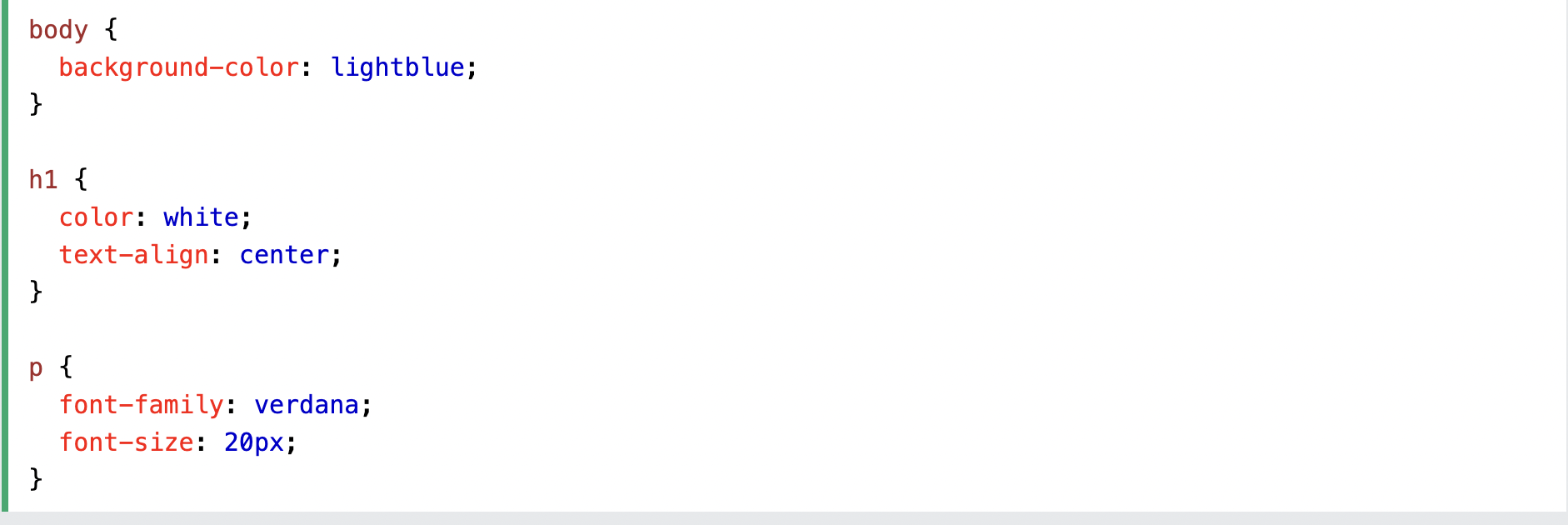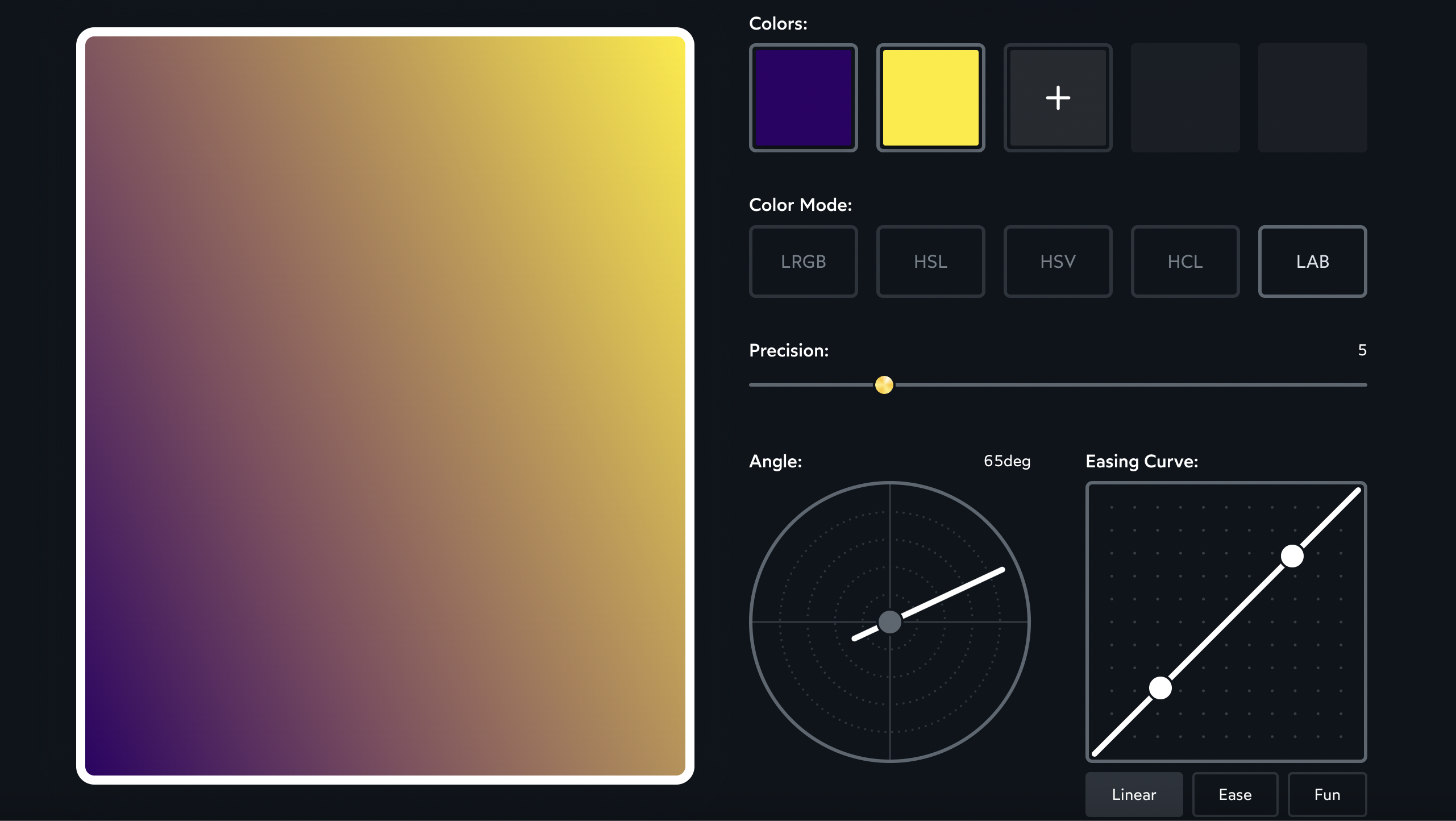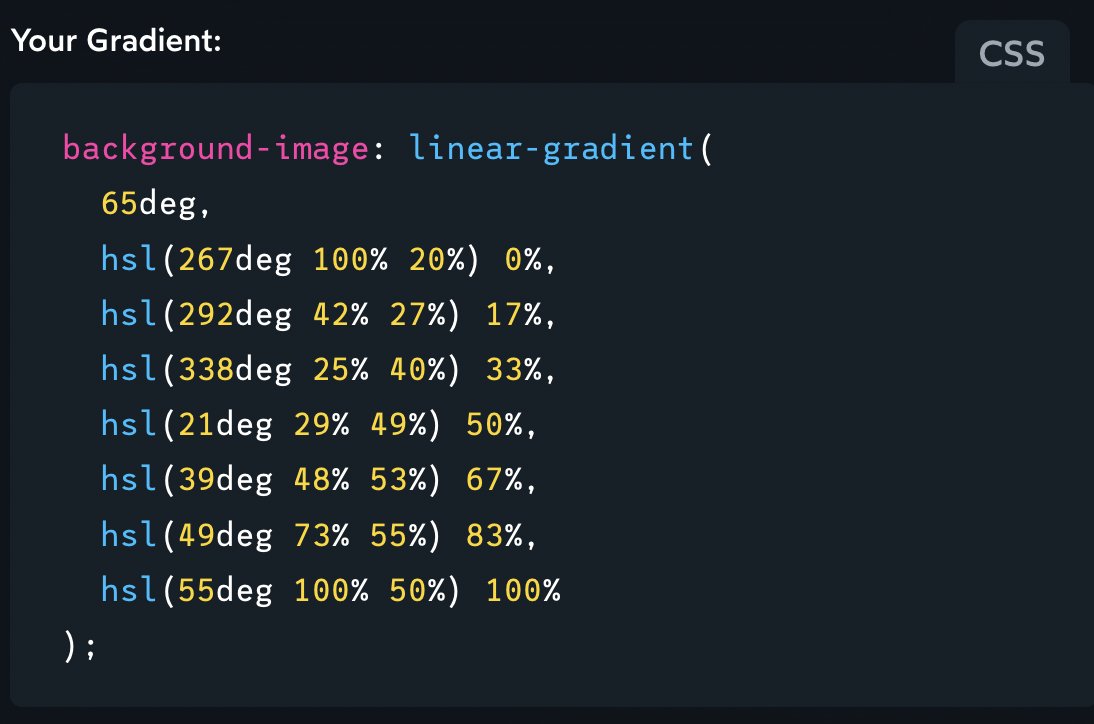What is Gradient Generator?
In programming, website design, and graphic design, gradients are highly common. They are entertaining to build, simple to make, and look attractive on your page. It's impossible to ignore the prevalence of gradients in brand design and the mainstream media, whether they're used as backgrounds, logos, text, or anything else (and even harder to deny their visual appeal).
It can be said that Gradient Generator is a useful tool to generate Gradients in Graphic Design.
About CSS:
CSS is the language used to design an HTML document.
CSS expresses how HTML factors should be displayed.
CSS Syntax:
A CSS syntax includes 2 parts: a selector and a declaration block.
- The HTML element you want to construct is indicated by the selector.
- The declaration block contains one or more of the same types of declarations which are separated by semicolons.
The name of the CSS property and its value in each declaration are separated by a comma.

CSS Syntax

CSS Gradient Generator:
There are many tools to create Gradients in Graphic Design, one of the most popular is CSS Gradient Generator.
Using a straightforward graphical user interface, this generator will generate CSS Gradient code. All browsers that support CSS will be able to use the created CSS code. The generator may accept pre-existing CSS gradient code to update and can output code for both linear and radial gradients.
Choose one of our preset colors to see the resultant gradient if you're having trouble deciding where to start.
Steps to create Gradients by using CSS Gradient Generator:
The days of creating a gradient on a website just using images are long gone. Gradients can now be easily made inside of CSS styles.
We use the CSS property background-image, or a condensed form of background-image, to set the gradient. By utilizing the linear-gradient or radial-gradient functions and defining the start and end colors, we can produce both linear and radial gradients. Here is a syntactic illustration:

